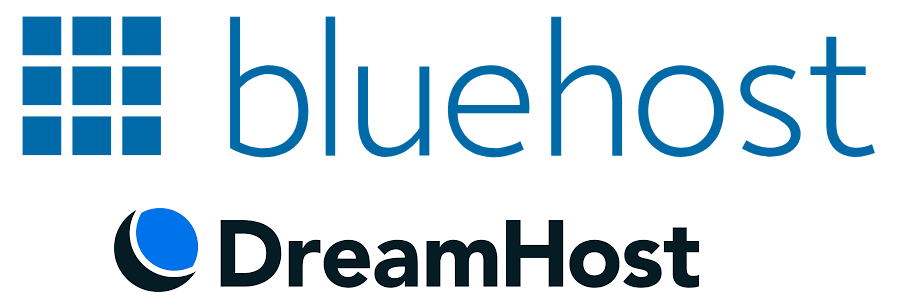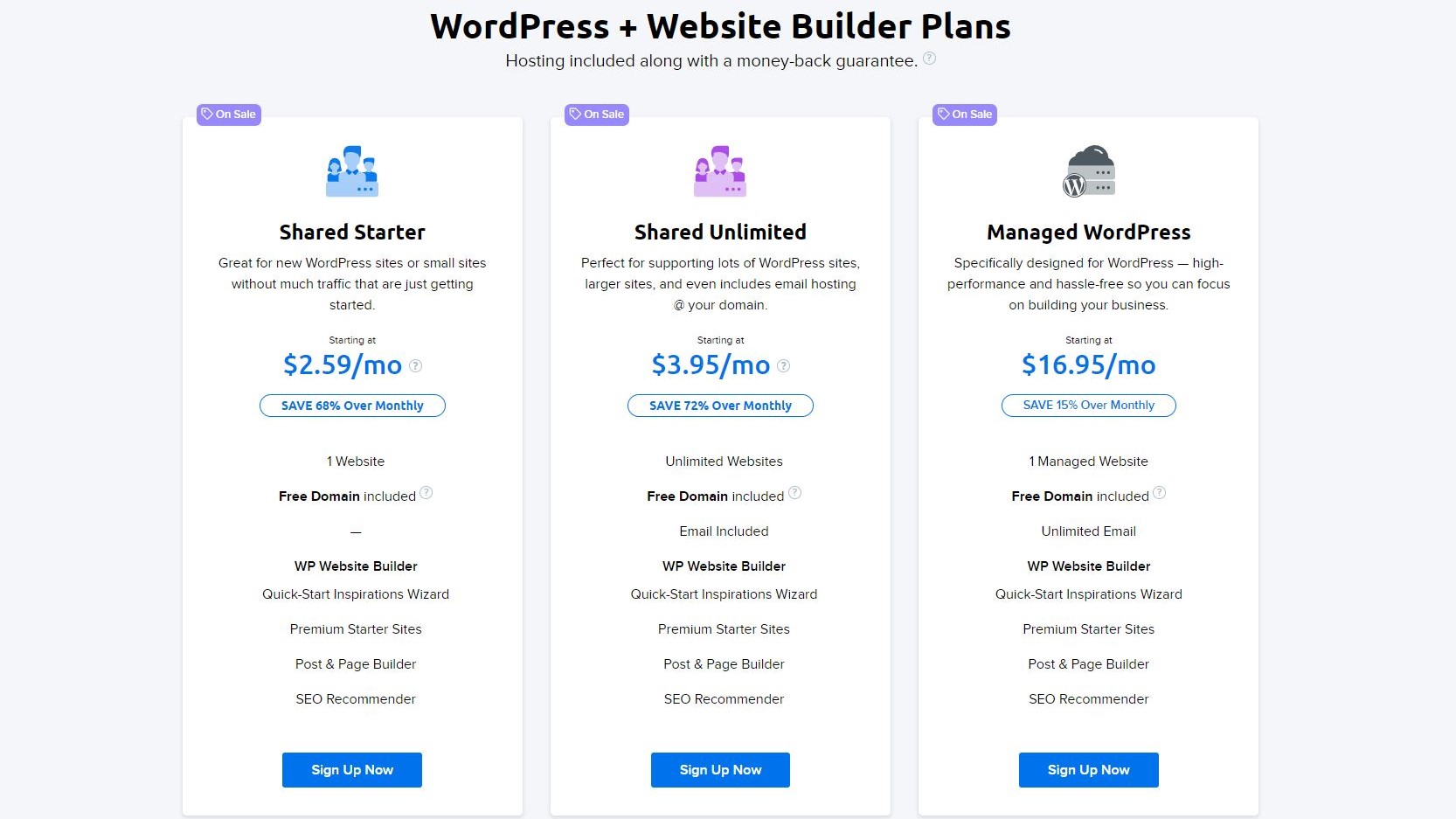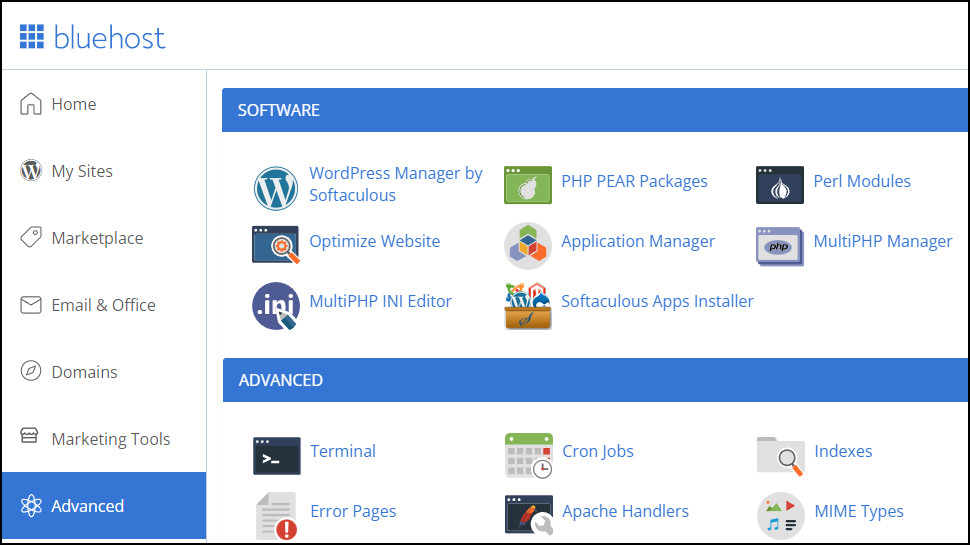Dreamhost vs Bluehost: Which is better in 2023?
Which one should you choose?

Deciding on the ideal managed hosting service for your website has never been more time-consuming. The main reason is the flood of options given to users, options seemingly unique and - ideal for everyone. Almost every one of these providers claims they’re the best offer in town, which simply cannot be the case.
The first thing you should do is narrow your choices down to a handful of those whose features, pricing, and ease of use feel ideal. They can be major WordPress hosts, generally a popular choice among bloggers. However, there is much more to what they need to offer, from the simplicity of use to the speed and pricing offered.
In this article, we will look into Dreamhost and Bluehost to see which is easier to use, packs more features, is cheaper, and is overall the choice you should consider when opting for a place that will host your valuable website.
Main similarities and differences
Dreamhost is a web hosting provider headquartered in Los Angeles and founded back in 1996. It boasts over half a million global customers and hosts over 1.5 million web pages through their various offers. On the other hand, Bluehost officially started in 2003 as part of the Endurance International Group, hosting over 2 million domains.
At first glance, both seem to be aiming for the same niche, Word Press (WP) integration and optimization. Yet, both support other CMSs, with Bluehost supporting WooCommerce and dedicated hosting, while Dreamhost offers Cloud Dedicated hosting. Both have a modern native dashboard; the one offered by Dreamhost is more customized to their specific needs and the needs of the users.
Furthermore, both providers offer a free domain, 50GB SSD storage space for a single website, SSL certificates, and unlimited bandwidth. They’re also quite similar in pricing, aiming to give better discounts when users opt for longer billing terms. Both also offer free website migration, with Bluehost offering a paid version for professional site transfer. And finally, both have their servers in the US, with average speed for Dreamhost at 231ms and Bluehost at 361ms.

Ease of use
The default user dashboards offered by both providers are intuitive and make orientation seamless. We would argue that Bluehost, thanks to its cPanel, is easier to use overall. DreamHost offers a customized dashboard which may be more challenging for beginners, despite the fact that it contains all the necessary tools.
If you’re starting the service for the first time, both providers will offer to install WP for you, which will then lead you to the dashboard from which you can manage and configure your site(s). Both utilize the left-hand side menu to house their management tools; however, Bluehost has more intuitive shortcuts. For example, the “My sites” shortcut will lead you to all of the websites you’re hosting, while Dreamhost makes it a bit more complicated to do the same thing.
Regardless, both are intuitive and have powerful control panels, but overall, Bluehost is easier to navigate.

Pricing
Dreamhost offers three pricing plans, the “Starter” at $4.95 a month, the “DreamPress” at $19.95 a month, and VPS at $15 a month. Choosing yearly plans will reduce the per-month costs but tie you in with the hoster for longer.
Bluehost, on the other hand, offers a wider range of options with four total plans, from the Basic one starting at $2.95 a month all the way up to the Pro option that costs $13.95, with renewals done at regular rates, which are significantly higher. Neither offers a free trial, but users can utilize the 30-day money-back guarantee to test out both hosters before committing to either.
When it comes to payment options, Dreamhost offers more ways for their users to pay, covering Credit/Debit Cards, Electronic Checks/ACH, PayPal, Check, or Money Order. Yet, Bluehost offers “only” Credit Card payments and PayPal.
If opting for a longer billing term, overall, Dreamhost seems to be the cheaper option at the moment. Unfortunately, the cheapest plans are more limiting; therefore, paying more is a necessity if you want more advanced options.

Features
As both hosters represent ideal options for WP, we will start off with these specific features in mind. Both offer an automatic WP installation and a WP website setup wizard, which guides you through a quick setup process. If you need more support, Bluehost offers Blue Flash service that gives you the option to call customer support which will assist you in building your website. There is also the Marketplace with Bluehost, from which you can purchase and install premium themes and plugins.
Dreamhost has a similar option in cooperation with BoldGrid; you can also buy and install premium themes and plugins.
Finally, there is the staging service from both hosters, where you can test out plugins and content without affecting your original site. This can be useful if you are unsure how certain elements will look or whether some plug-ins will create issues for your entire site. Through staging, you can also benchmark your site to see how fast it loads with the new elements.

Security
Across all of their hosting plans, both offer free SSL certificates, which encrypt the connection between a user’s browser and your web server. While this basic protection can be sufficient for basic sites, both providers offer additional security features. For example, advanced SLL certificates cost $15 per year with Dreamhost and $6.67 a month with Bluehost. Advanced certificates are often mandatory for e-commerce sites.
If you’re looking for network monitoring, malware scans, automatic malware removal, as well as additional security features, again, you will have to pay. Dreamhost offers their DreamShield for $3 a month, while Bluehost offers SiteLock ranges from $6.99 a month to $29.99.
It is recommended that you do your own website backups; however, both providers can automate this task for you for a sum. Overall, both providers have great security offerings, and it would be difficult to proclaim a winner in this category. You can’t go wrong with either of them when it comes to security.
Customer support
Bluehost has a multichannel support approach through a toll-free number, a ticketing system, email support and a 24/7 live chat support. While the response time is not defined for email and ticketing support, the replies come back fairly quickly. Furthermore, Bluehost offers free consultations in data securit, traffic generation and website performance. The knowledgebase available on Bluehost along with the active membership forum can also help you solve problems on your own.
Dreamhost pretty much offers similar customer support, with the biggest differentiator being the live chat support. Dreamhost offers live chat support only between 5.30AM and 9:30PM PST, and if there is a large queue you will not be served. Moreover, there is no toll-free line, you can ask for a callback from tech support, but if you overuse it you will have to pay.
In terms of the knowledge base it is equally as detailed as the one offered by Bluehost. But, overall Bluehost has the more comprehensive and better customer support.

Which one is best for SMBs?
If you’re looking for a reliable hoster for your small business, both can provide you with the necessary tools that do the job they’re designed for. If you are a complete newbie and are trying to host your first web site or blog then Bluehost may be more intuitive and easier to setup. On the other hand, if you’re looking to run a blog at a budget and don’t care much for fancy bells and whistles, then Dreamhost may be right up your alley.
Like with most hosters, the needs of your small business will dictate which hoster has what you need. Keep in mind it’s very difficult to find a hosting provider that ticks all of your boxes and comes at the lowest possible price. Some compromises will have to be made.
For example, Bluehost offers a more comprehensive platform that is easy to use, has great customer support, and offers advanced features, but your site will be slower, and it will be more expensive to use it. Dreamhost, on the other hand, offers quicker setup speeds, a higher learning curve, and similar services at a lower price.
Verdict
Dreamhost and Bluehost both have the most affordable shared hosting plans among global hosters. Of course, these plans may lack some functionalities, but the fact that you get a free domain name and great support for Word Press makes them a compelling option in the sea of web hosters.
Dreamhost is cheaper and faster, which means that if you’re looking to build a site with a “heavy” template and host a lot of videos and pictures, then Dreamhost may be a better option. Yet, overall Bluehost is a more comprehensive hoster, and if you’re looking to give your website more options to branch out from a simple blog, then it is worth paying more to get a complete offer from Bluehost.
- Check out our list for the best website builder
Check out the latest Bluehost coupon codes.
Are you a pro? Subscribe to our newsletter
Sign up to the TechRadar Pro newsletter to get all the top news, opinion, features and guidance your business needs to succeed!
Sead is a seasoned freelance journalist based in Sarajevo, Bosnia and Herzegovina. He writes about IT (cloud, IoT, 5G, VPN) and cybersecurity (ransomware, data breaches, laws and regulations). In his career, spanning more than a decade, he’s written for numerous media outlets, including Al Jazeera Balkans. He’s also held several modules on content writing for Represent Communications.